Historic Storrier Stearns Japanese Garden revived in Pasadena
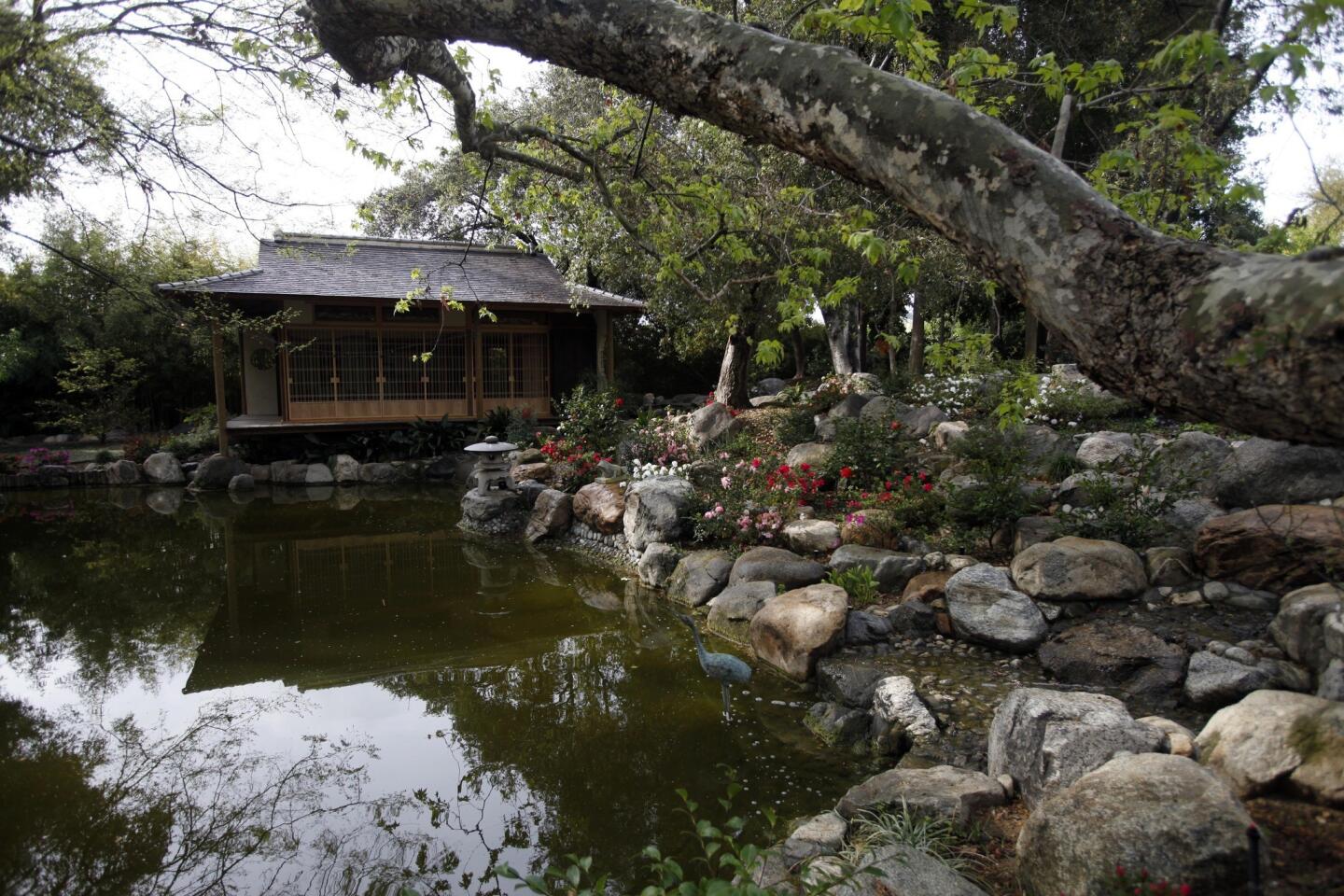
The heart of the garden is a teahouse overlooking a pond. Using the garden’s original plans, Jim Haddad oversaw the construction of the teahouse, which replicates the one that burned down. “It’s as close to the original as you could get,” he said. (Michael Robinson Chavez / Los Angeles Times)
The nearly 2-acre Storrier Stearns Japanese Garden in Pasadena was hardly the picture of enchantment: Plants had died. The pond had gone dry. The teahouse had burned to the ground. But owners have revived the original design, and as one expert said, it now stands “on a level with the best of the country’s top estate gardens.” Here’s a peek inside.
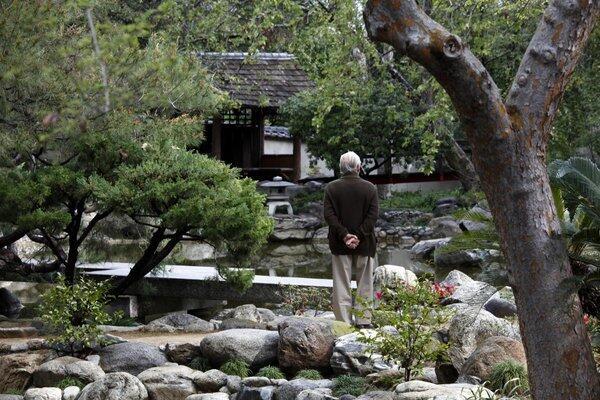
Owner Jim Haddad surveys the Storrier Stearns Japanese Garden in Pasadena, which dates to 1935 and has been listed on the National Register of Historic Places. Tons of granite boulders were hauled from the Santa Susana Pass to create the original; to complete the restoration, Haddad and his wife, Connie, had seven truckloads of new rock brought in to line the paths. (Michael Robinson Chavez / Los Angeles Times)
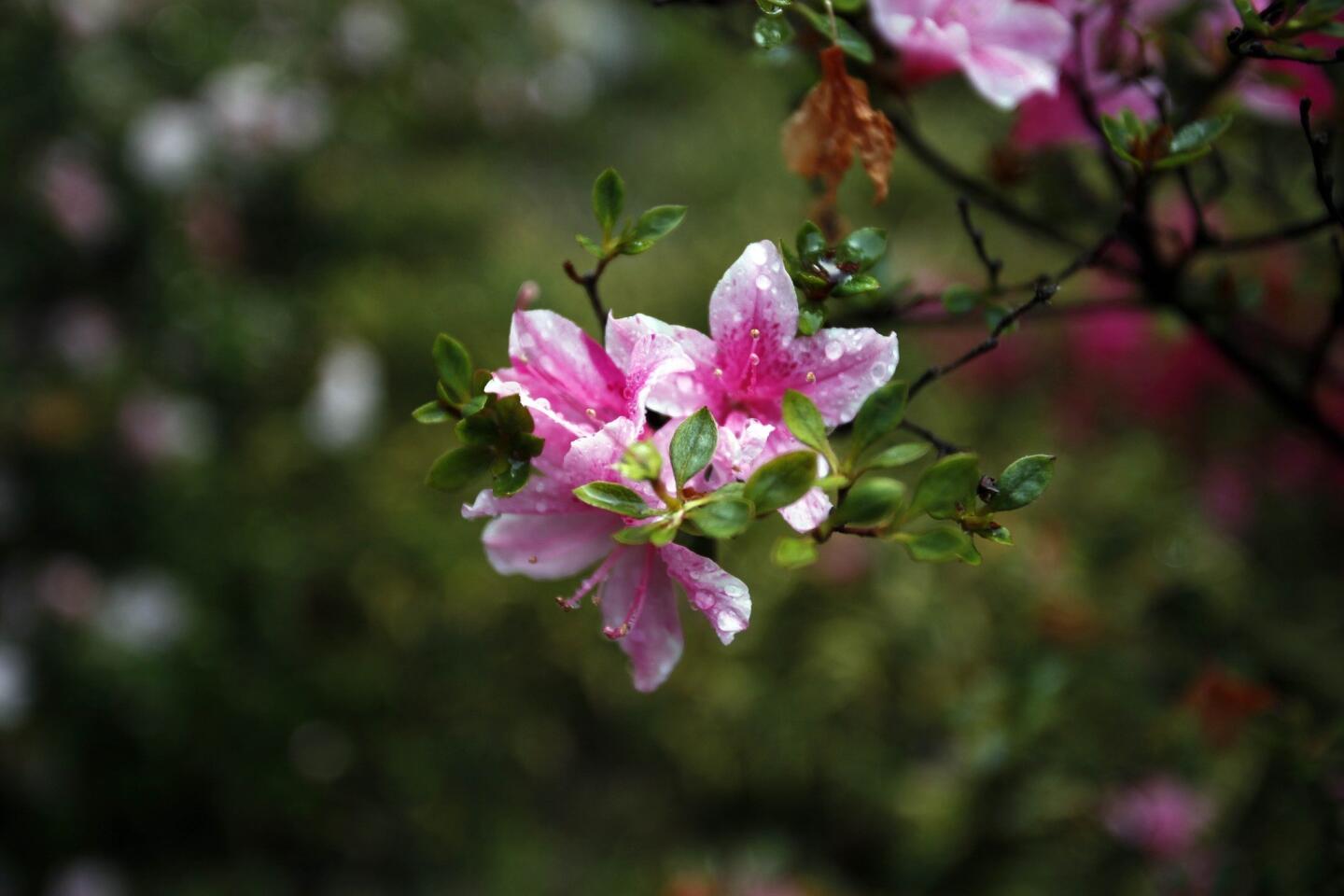
An azalea, photographed after a recent rain. (Michael Robinson Chavez / Los Angeles Times)
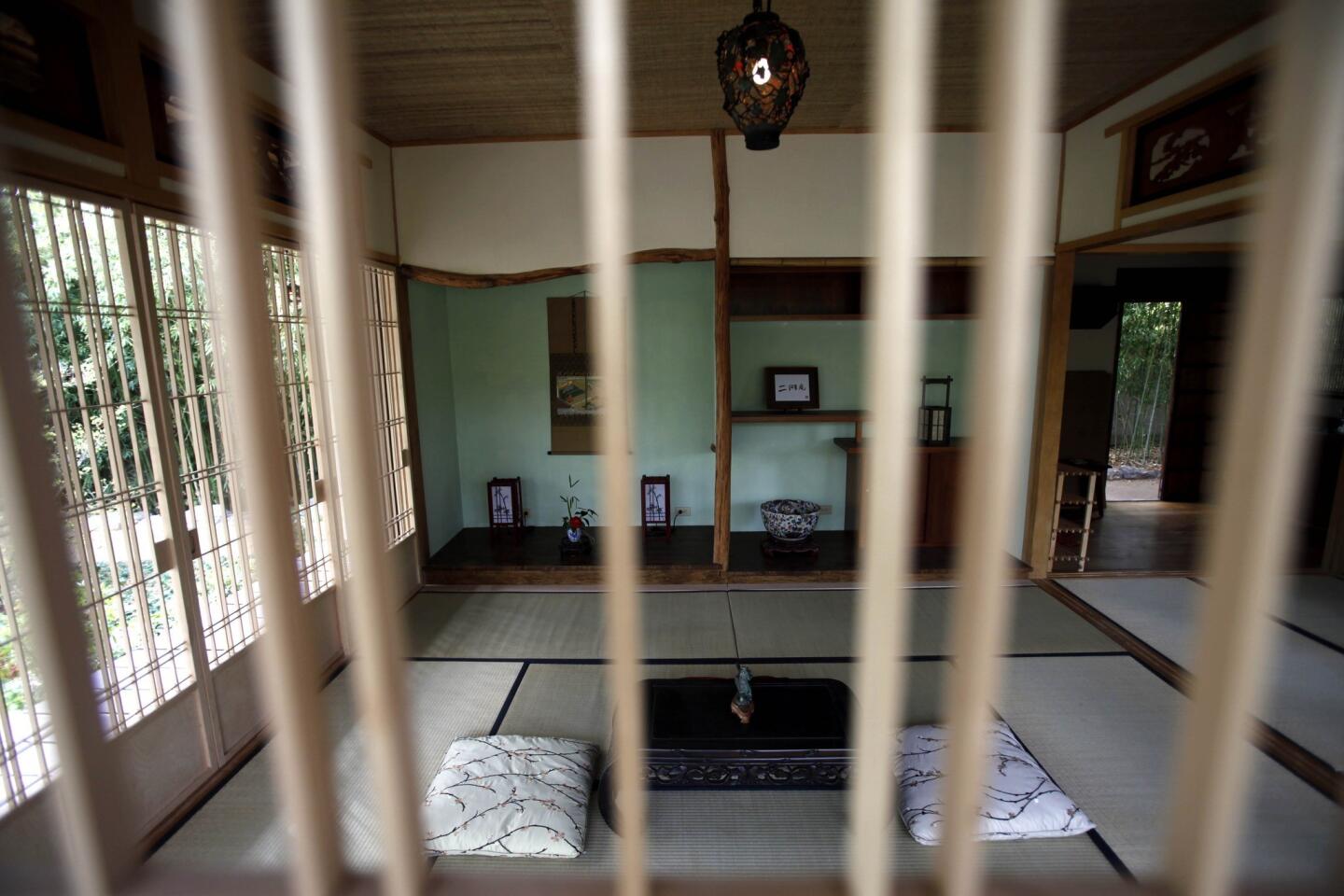
When it came time to replicate tree branches used for the teahouse’s interior decoration, something not spelled out in the plans, Jim Haddad relied on memory. “I looked for branches for a year,” he said, recalling that he scouted every lumberyard he could think of until he noticed a eugenia on the property that provided just the right look. (Michael Robinson Chavez / Los Angeles Times)
Advertisement
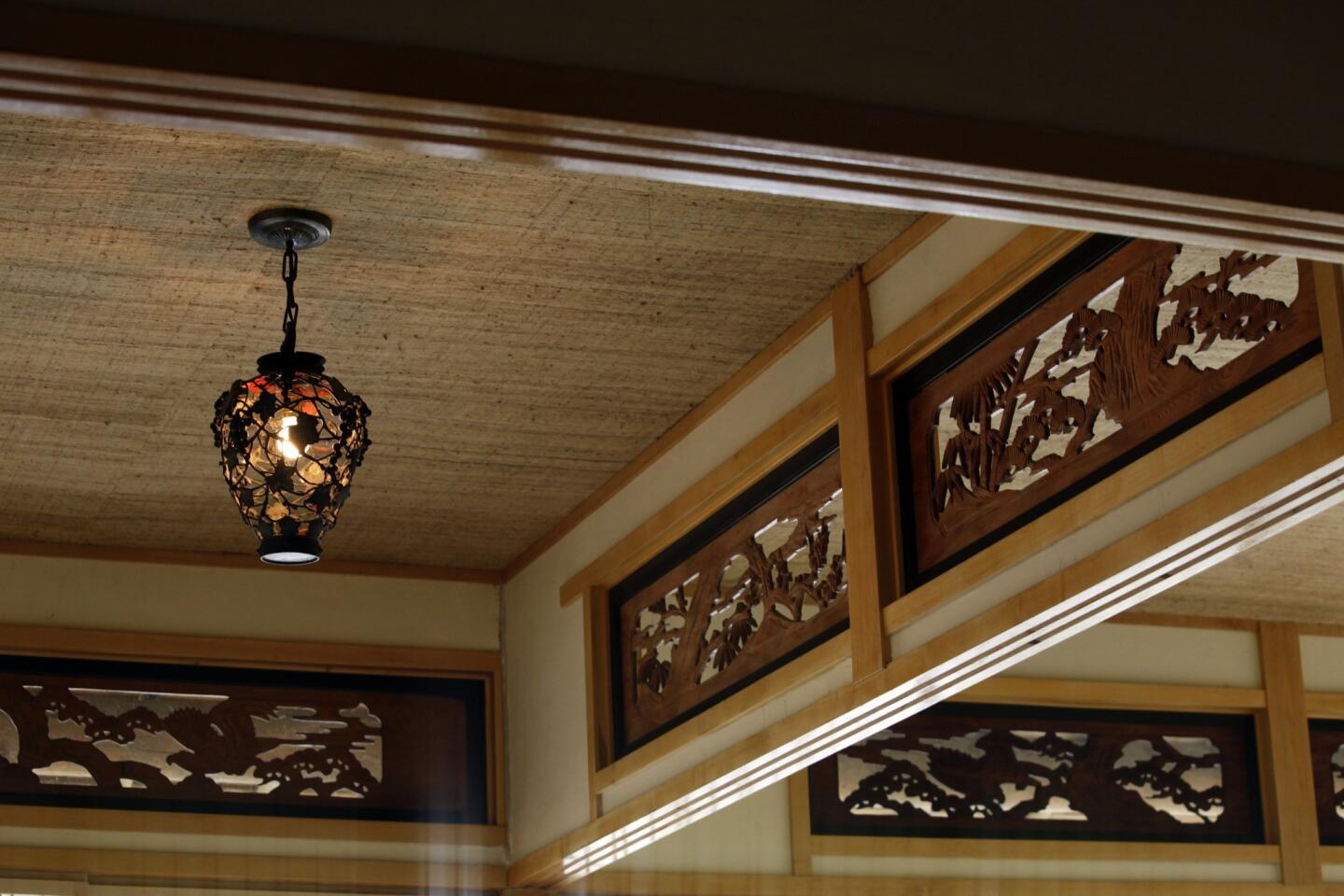
The intricate silhouettes inside the new teahouse evoke the original structure, which was nearly 400 square feet. It was built specifically for the Pasadena property in Japan, then shipped across the Pacific. (Michael Robinson Chavez / Los Angeles Times)
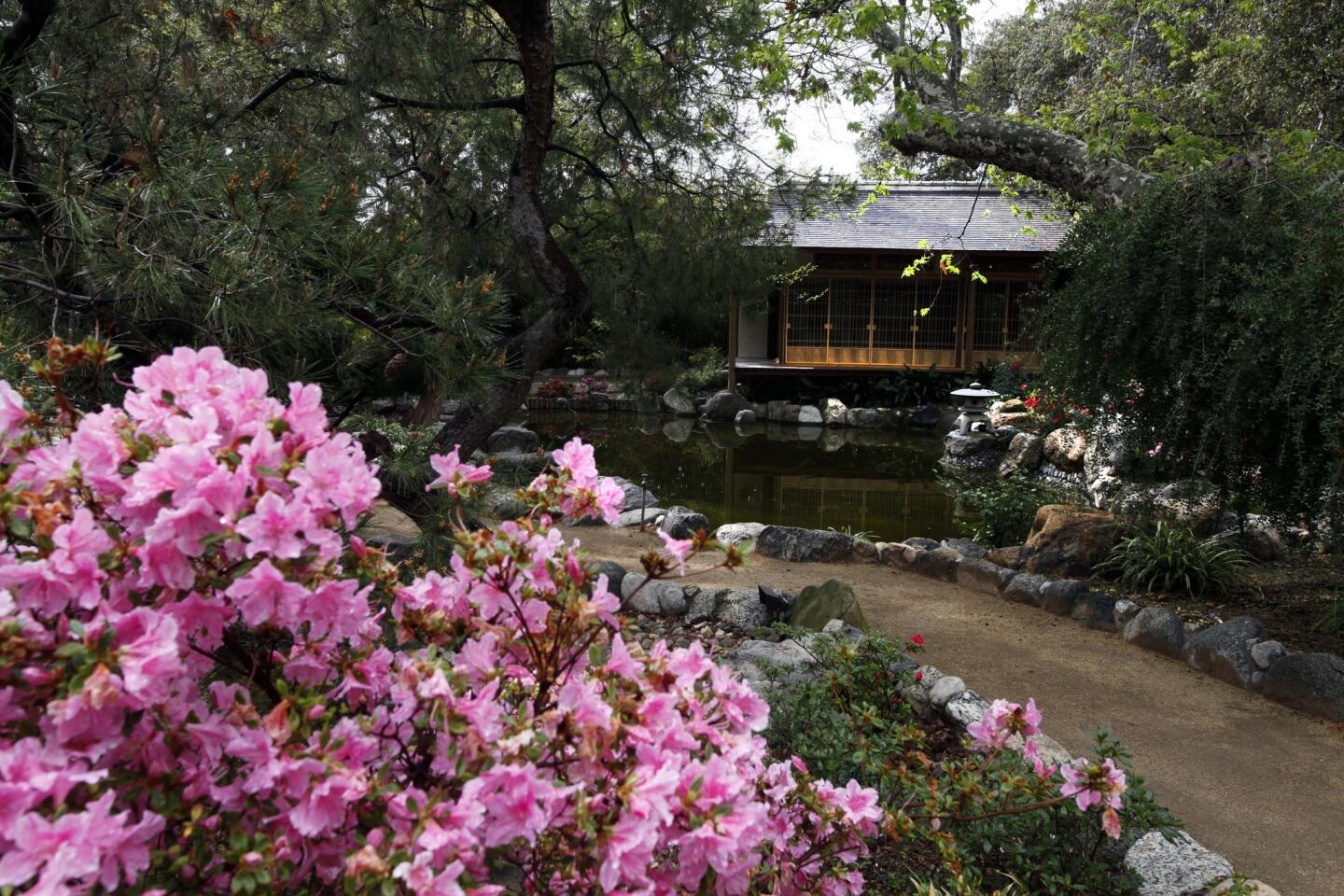
The current landscaping echoes the original plantings, which mixed Japanese woodland specimens -- azaleas, rhododendrons, black pines, Japanese maples, Chinese elms, camellias and ferns -- with California natives such as redwoods and live oaks. (Michael Robinson Chavez / Los Angeles Times)
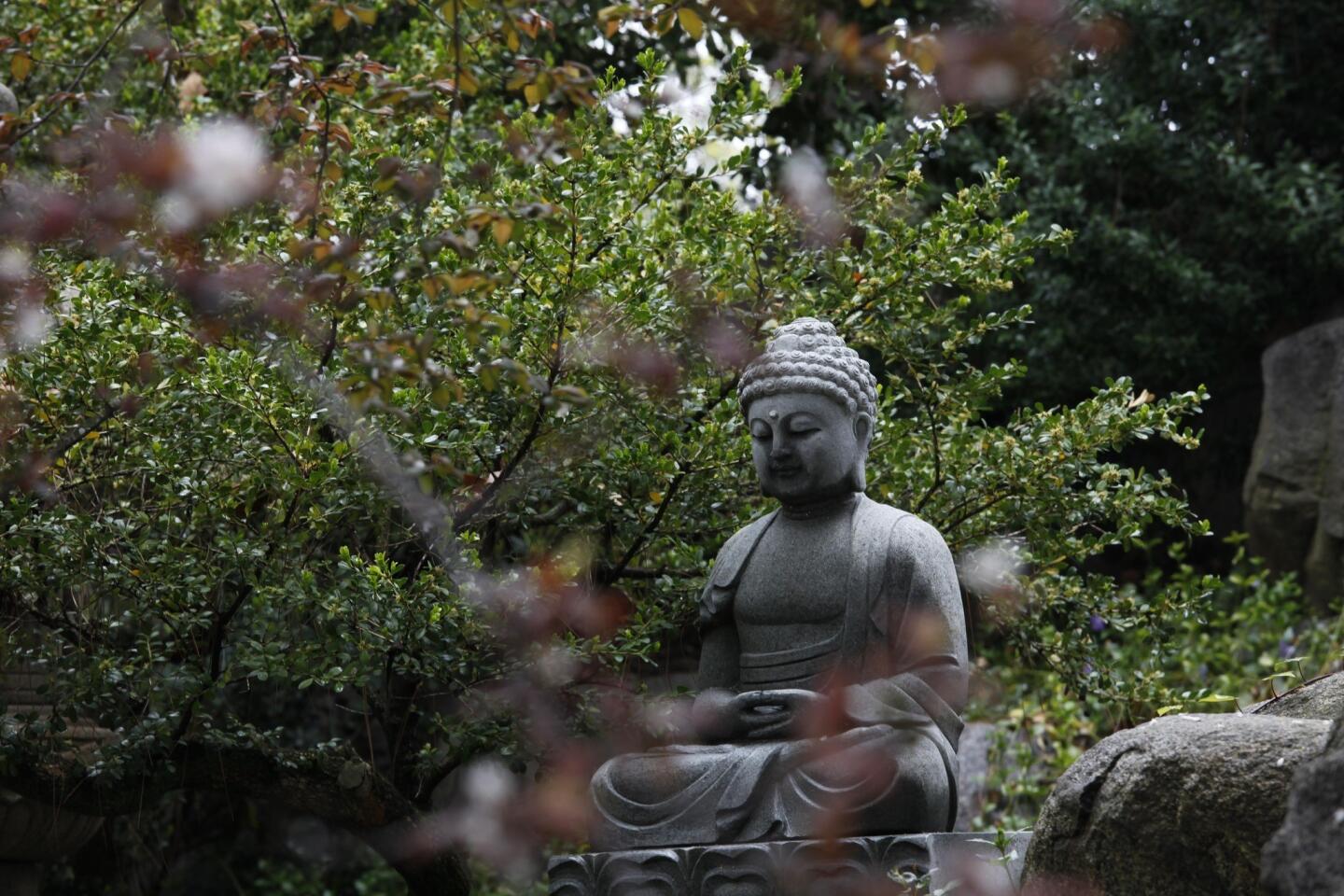
The picture of peace. (Michael Robinson Chavez / Los Angeles Times)
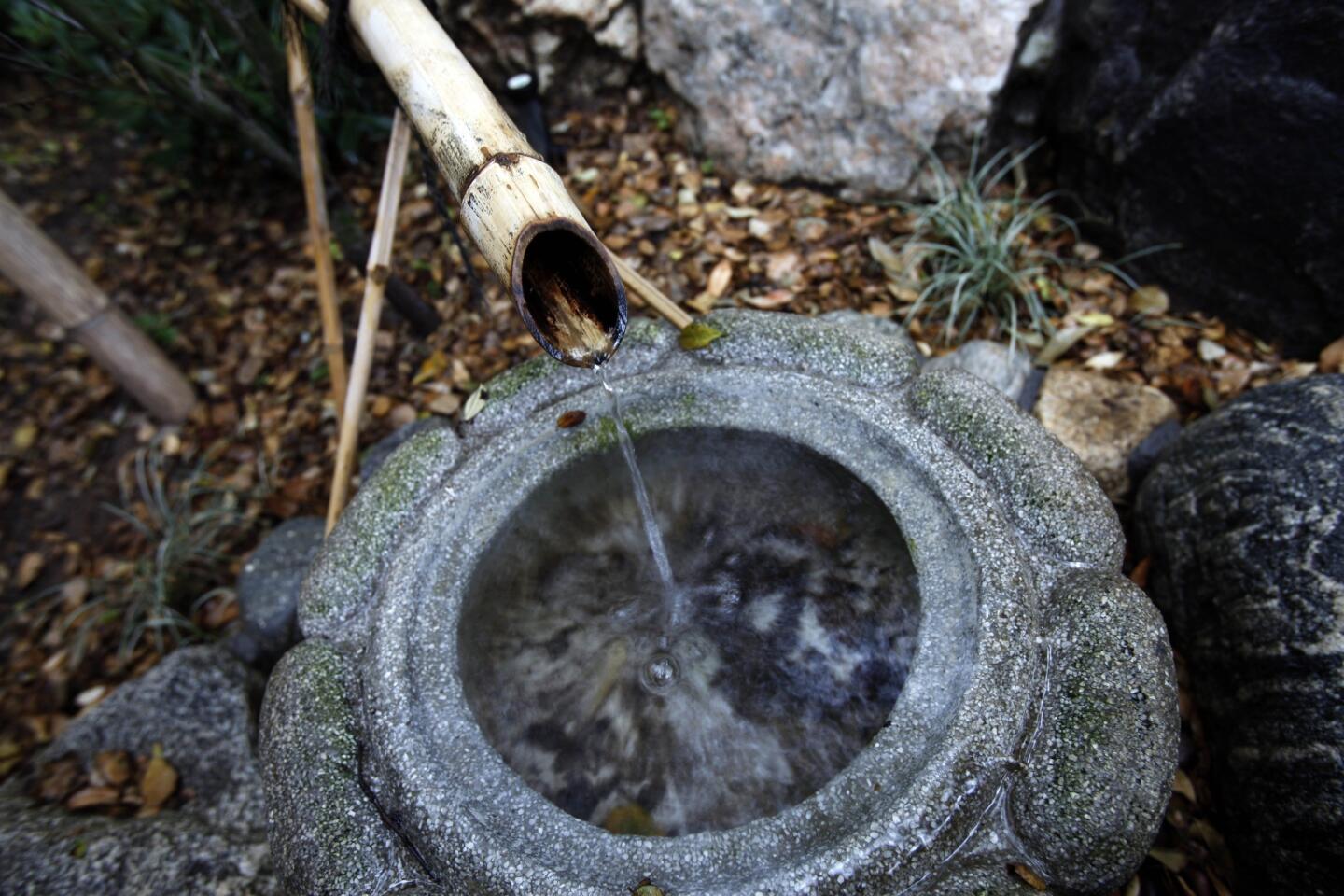
The grand gestures are mirrored by lots of small design details, such as this little bamboo fountain. (Michael Robinson Chavez / Los Angeles Times)
Advertisement
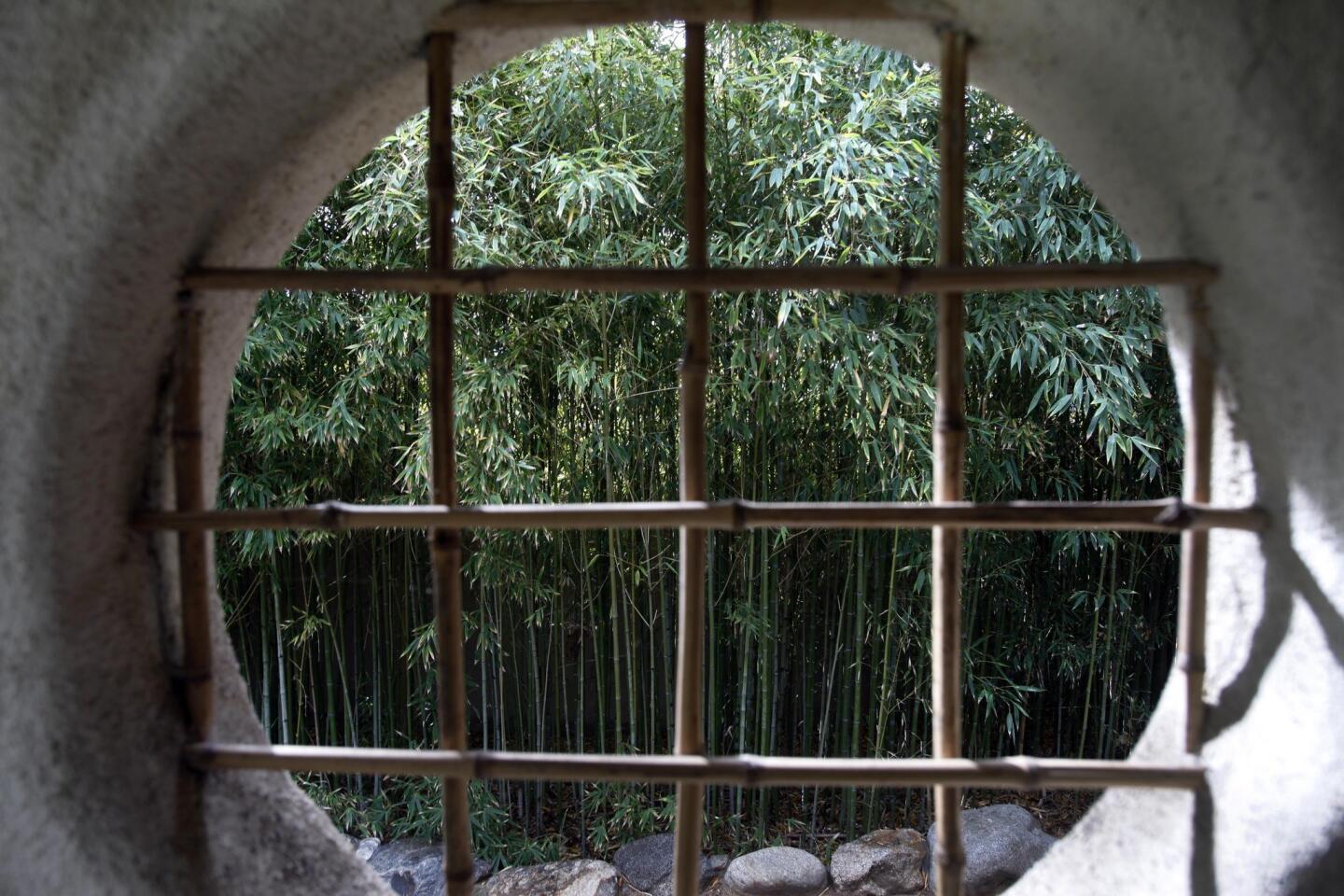
A stand of giant bamboo creates the illusion of a forest beyond. (Michael Robinson Chavez / Los Angeles Times)
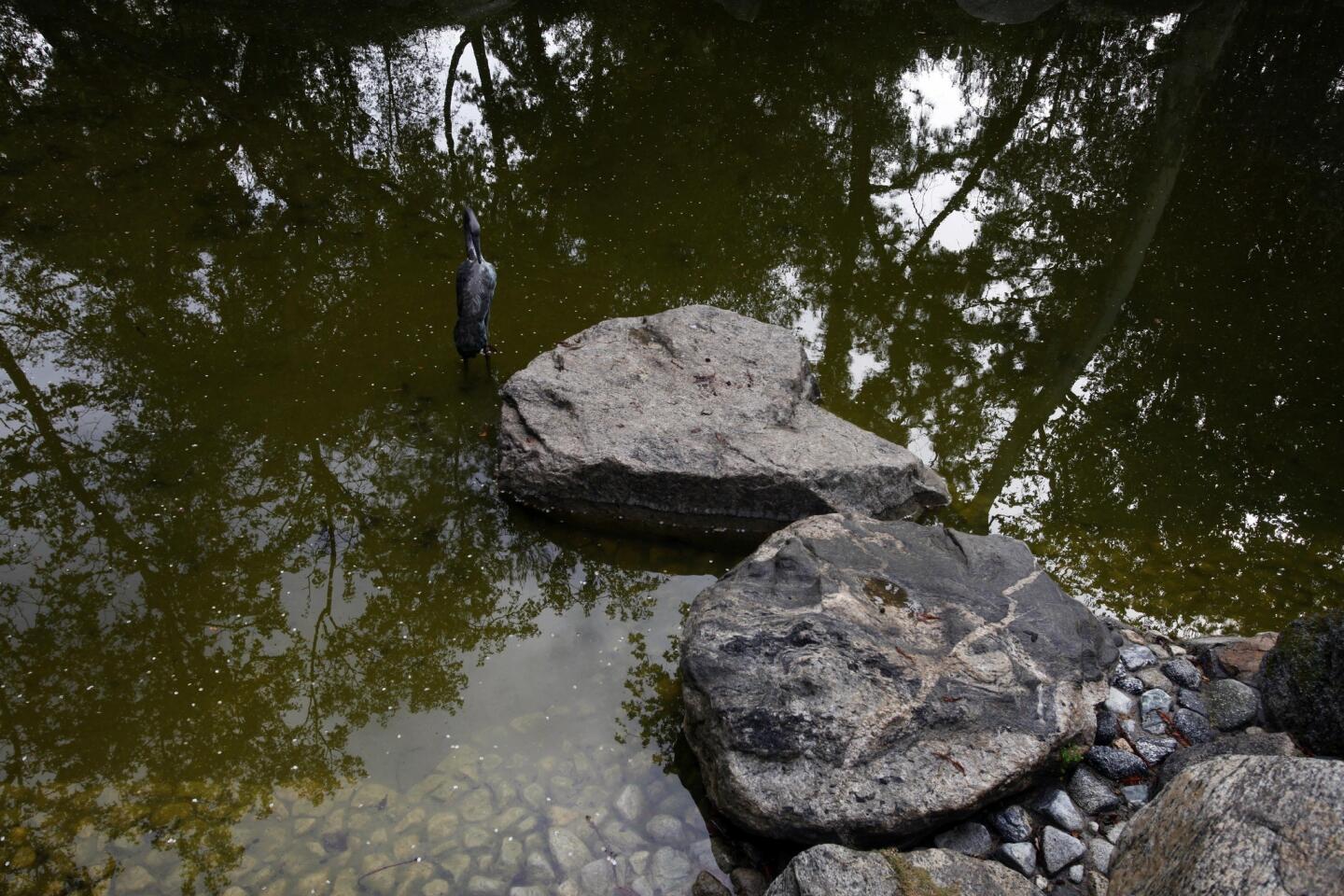
Small-scale statuary also lends a sense of moments frozen in time. (Michael Robinson Chavez / Los Angeles Times)
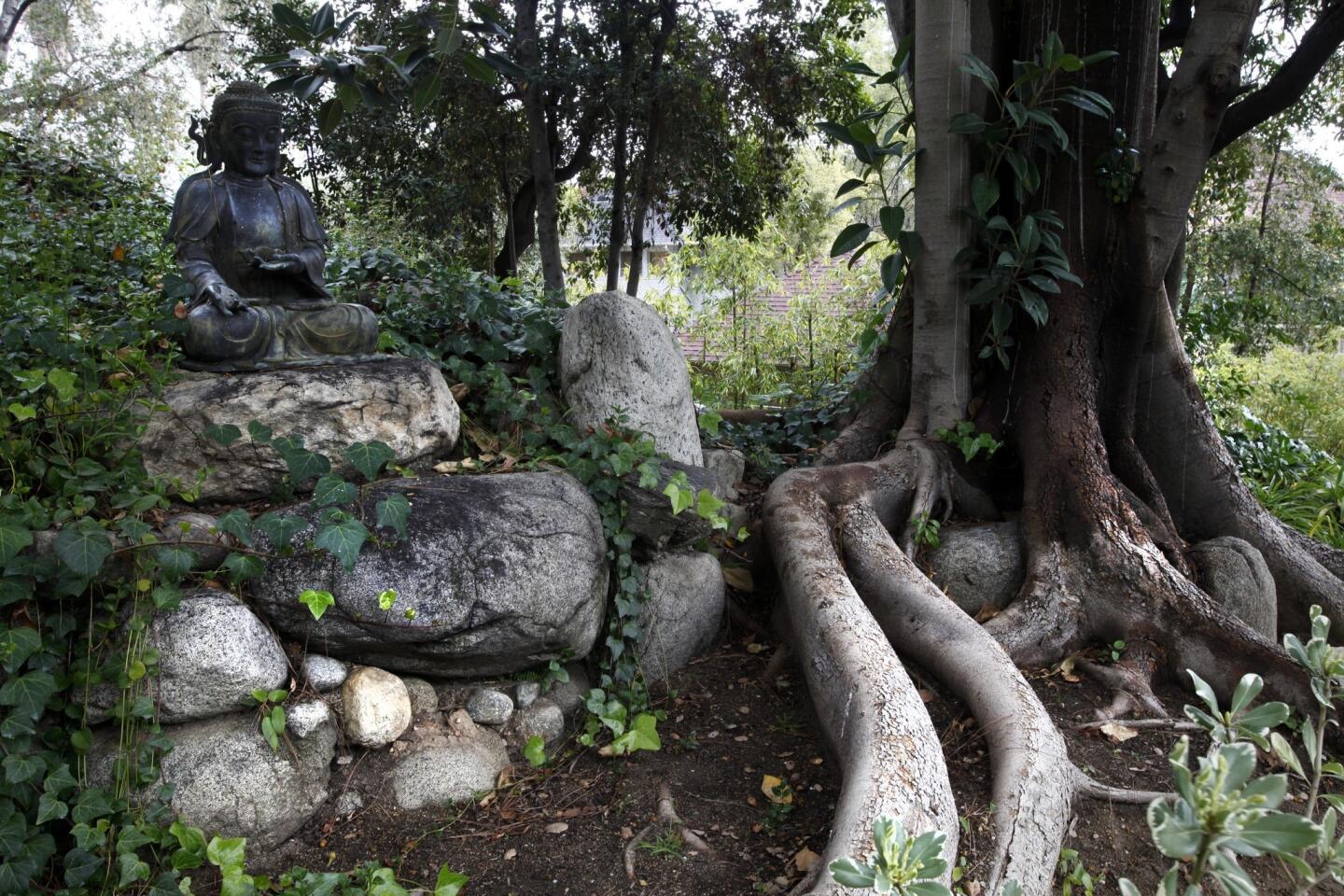
A Buddha statue watches over a large rubber tree at the east end of the garden. (Michael Robinson Chavez / Los Angeles Times)
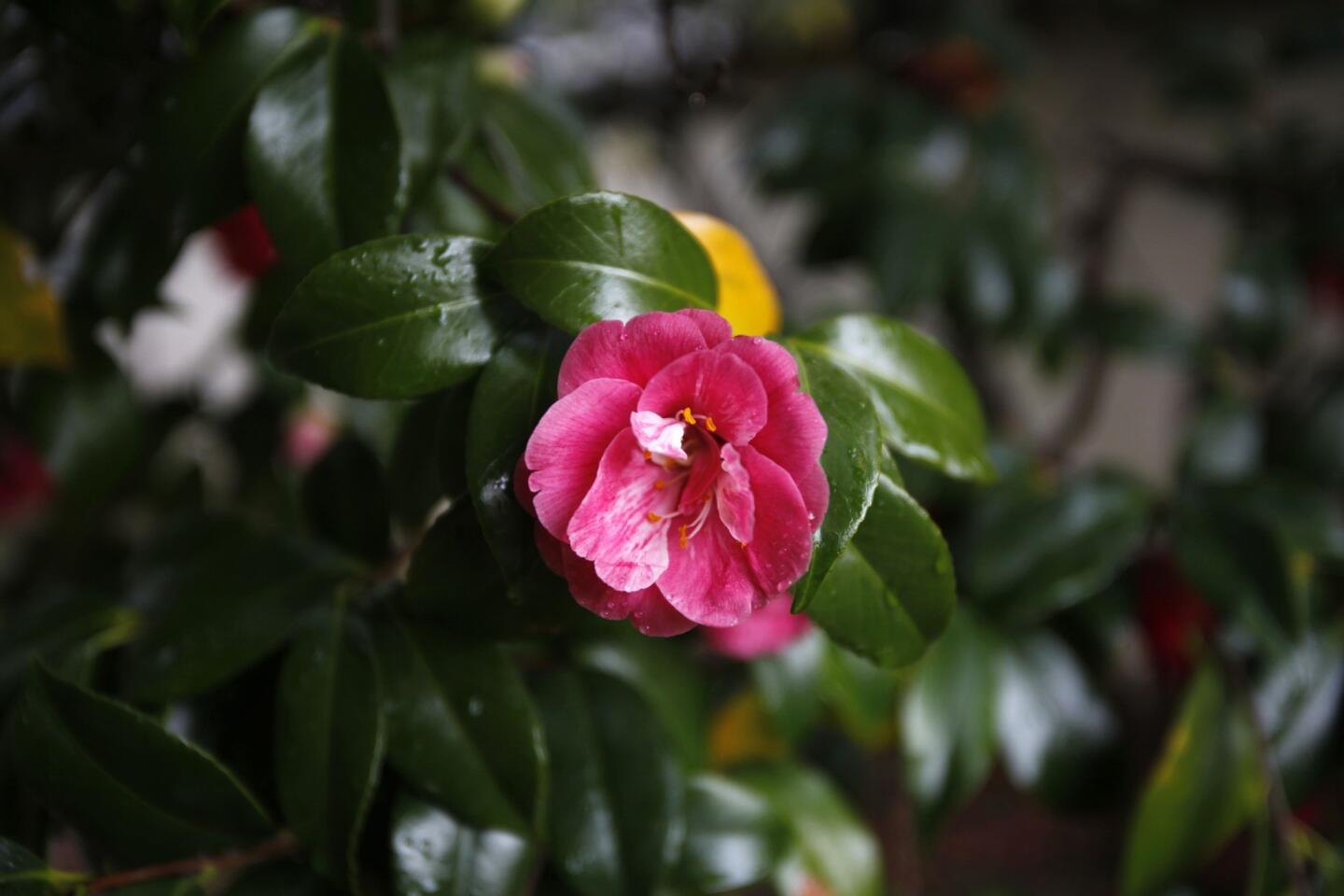
Camellia, pretty in pink. (Michael Robinson Chavez / Los Angeles Times)
Advertisement
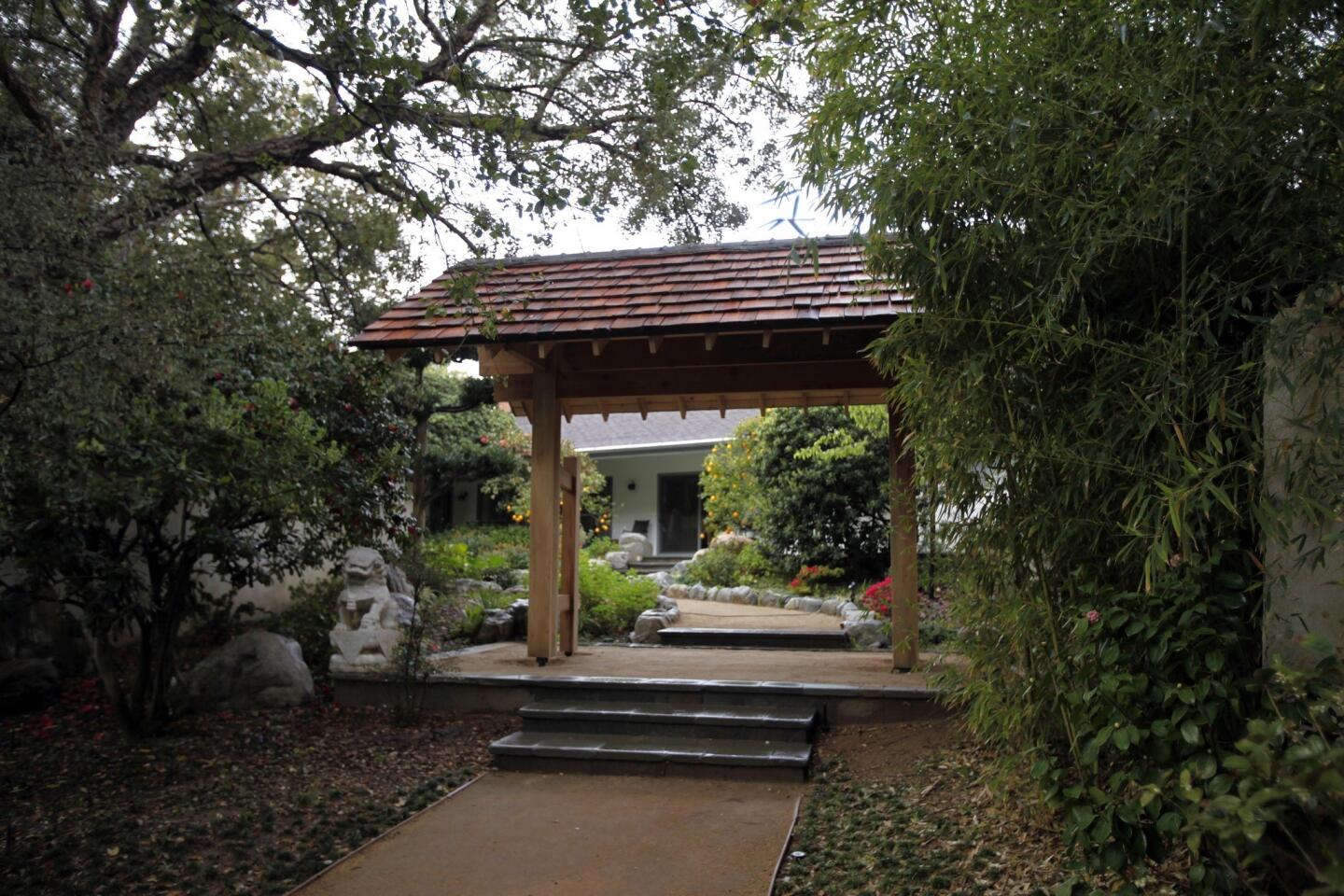
The 11-foot tall entrance gate is a replica. The original now stands in the Japanese garden in Balboa Park in San Diego. (Michael Robinson Chavez / Los Angeles Times)
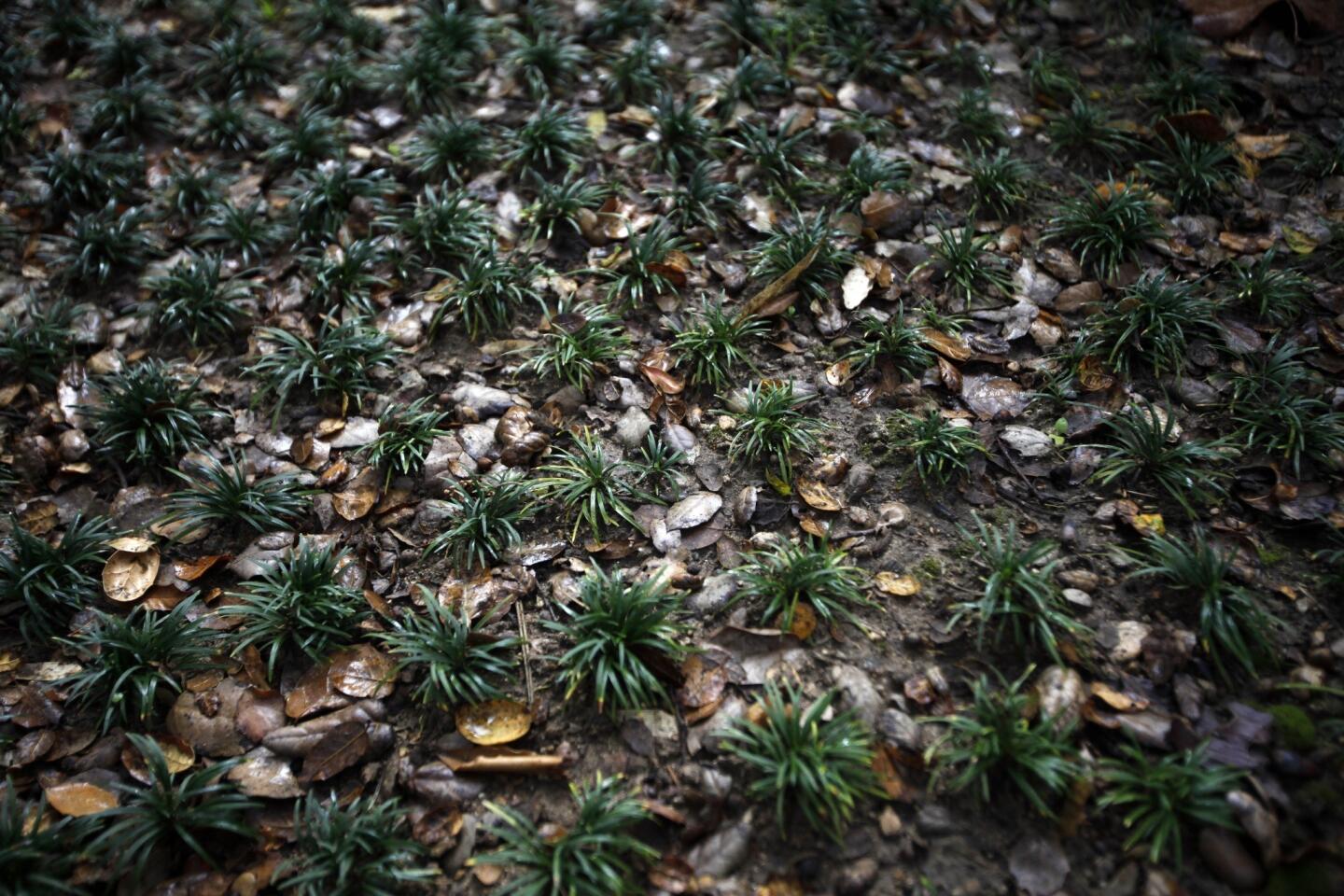
Mondo grass and leaf fall, creating their own graphic pattern by the entrance. (Michael Robinson Chavez / Los Angeles Times)
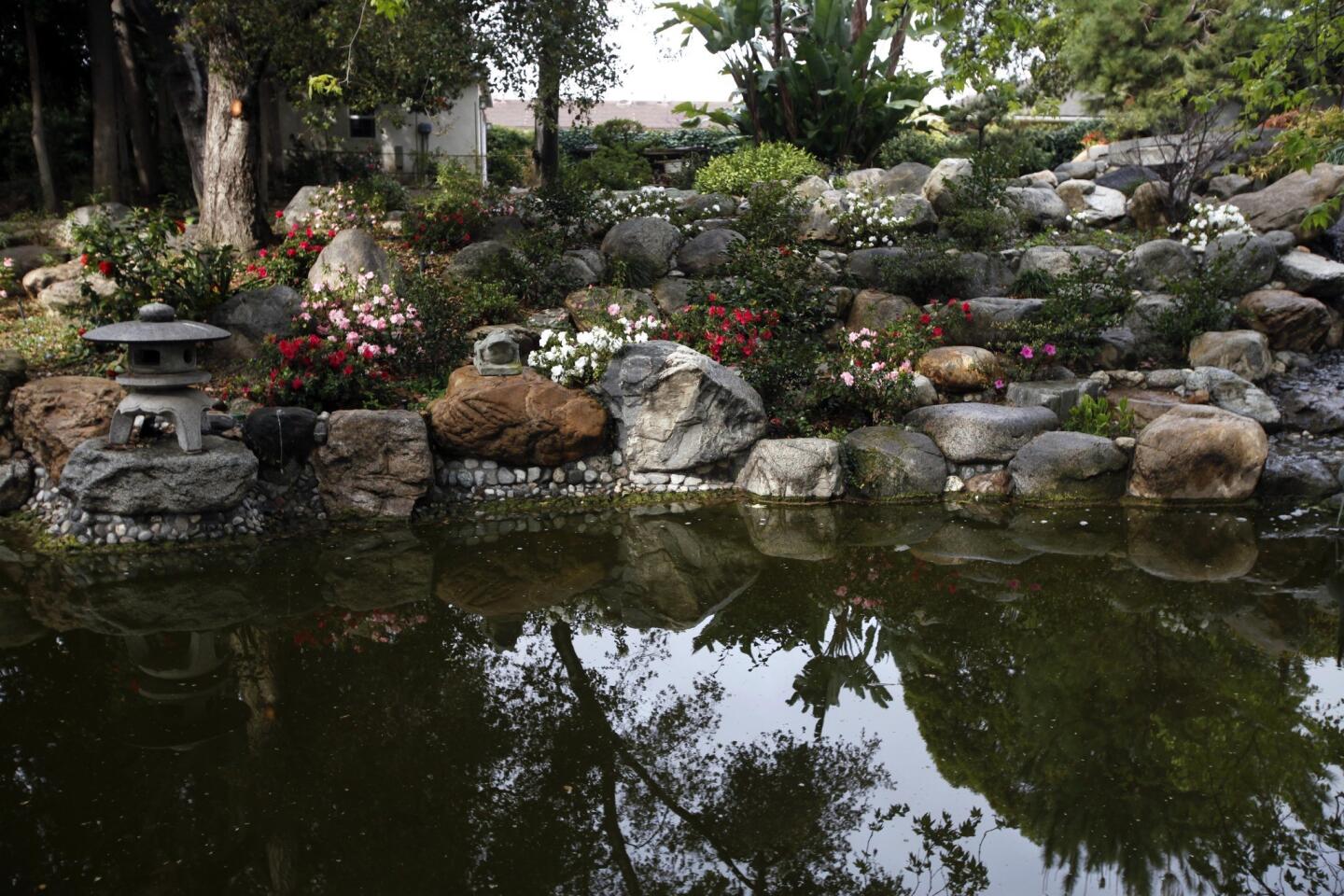
One of the biggest undertakings: the pond. Jim Haddad spent eight to nine months looking for the right materials and method to fix its leak. (Michael Robinson Chavez / Los Angeles Times)
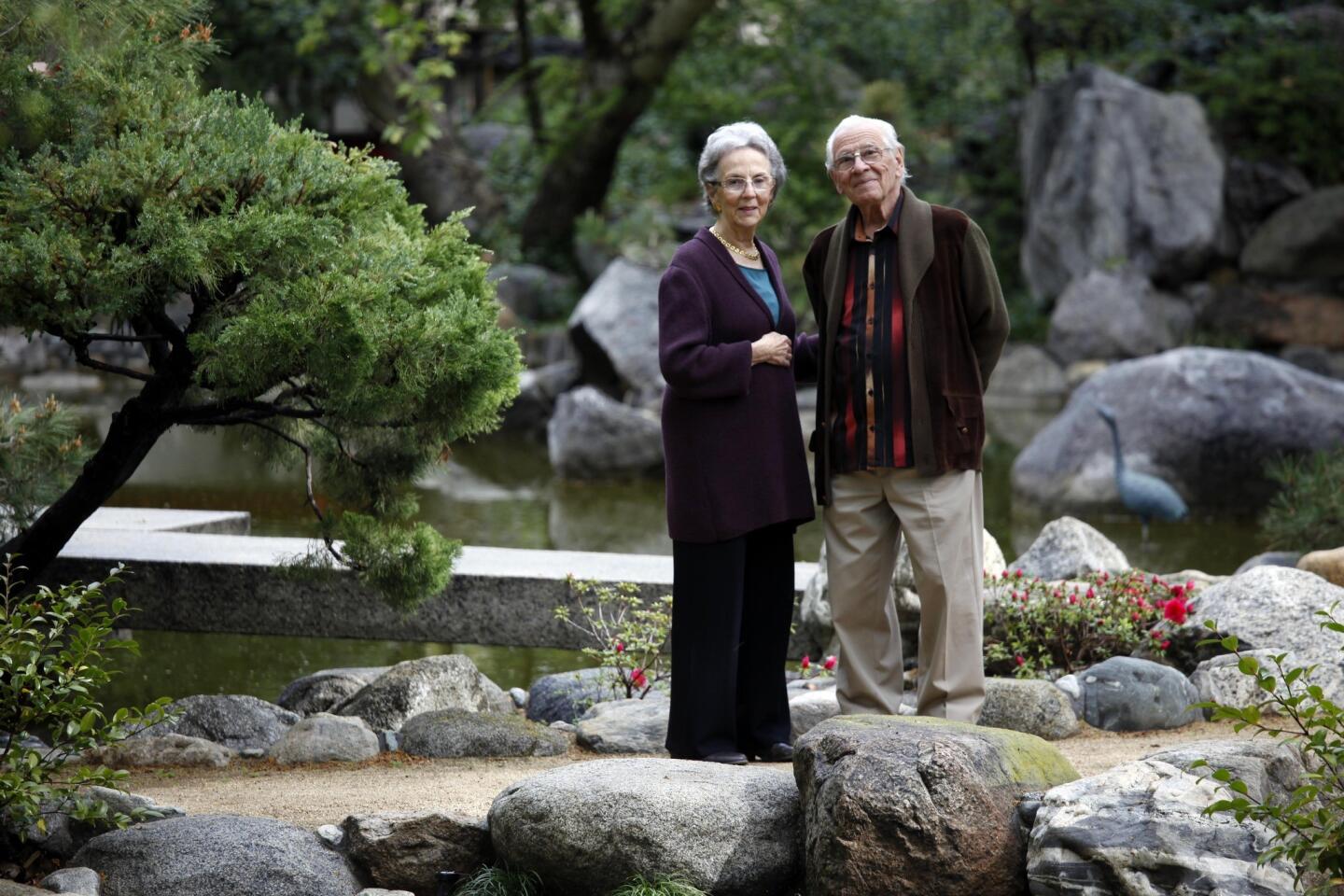
Connie and Jim Haddad in the Pasadena garden they restored. The Storrier Stearns Japanese Garden will be one of the landscapes on the Garden Conservancy’s Open Days tour April 28. Admission is $5 per garden. Maps and tickets will be available from 9:30 a.m. to 3:30 p.m. on the day of the event at Arlington Garden, 285 Arlington Drive, Pasadena. For more on Storrier Stearns: (626) 399-1721, japanesegardenpasadena.com.
Theodore Payne’s 2013 native plant tour (Michael Robinson Chavez / Los Angeles Times)



